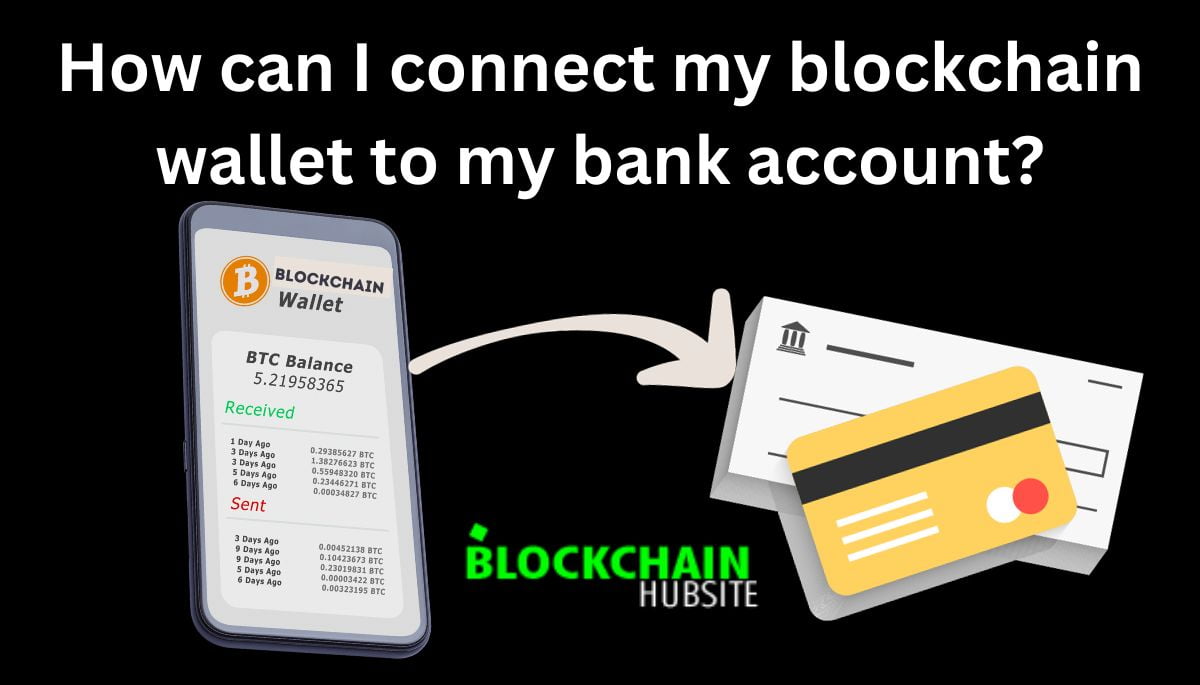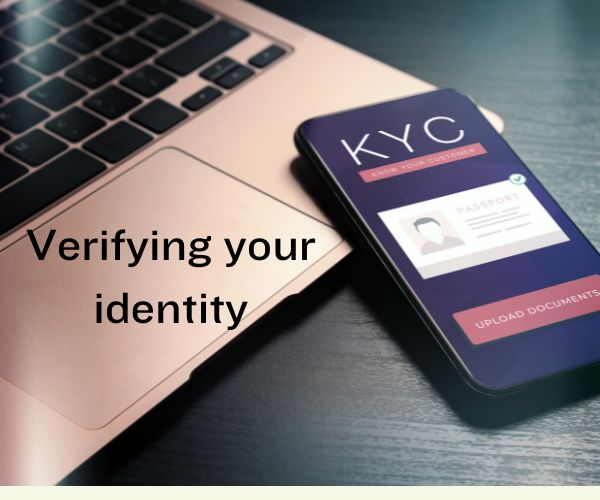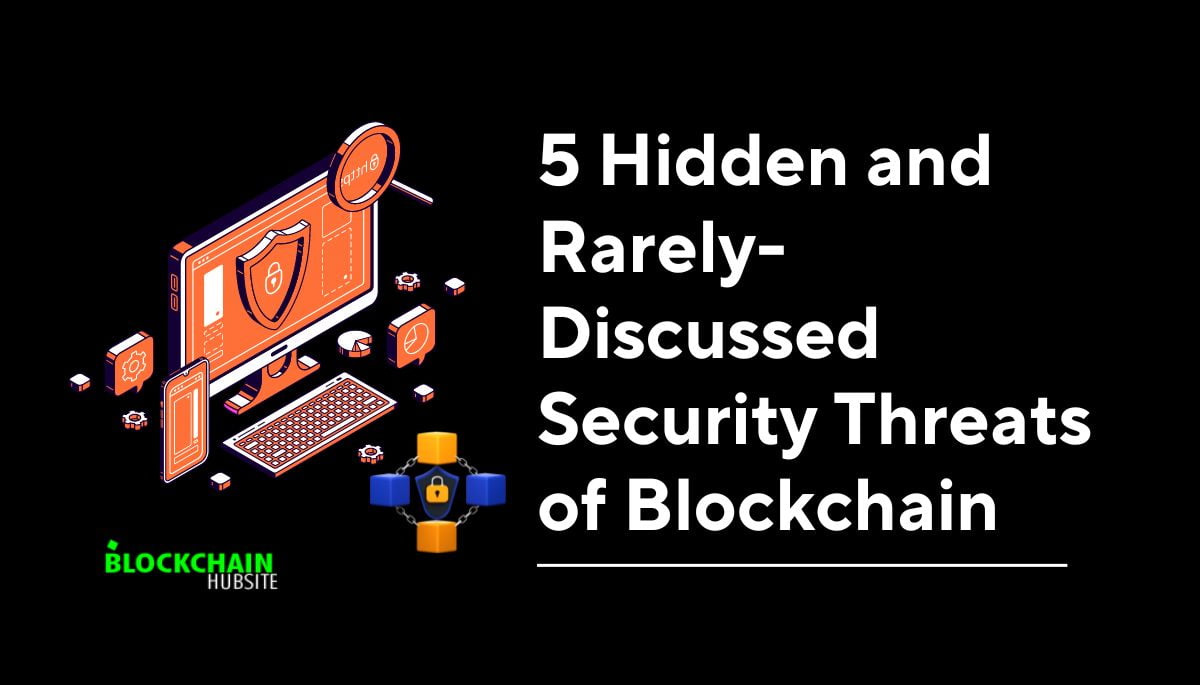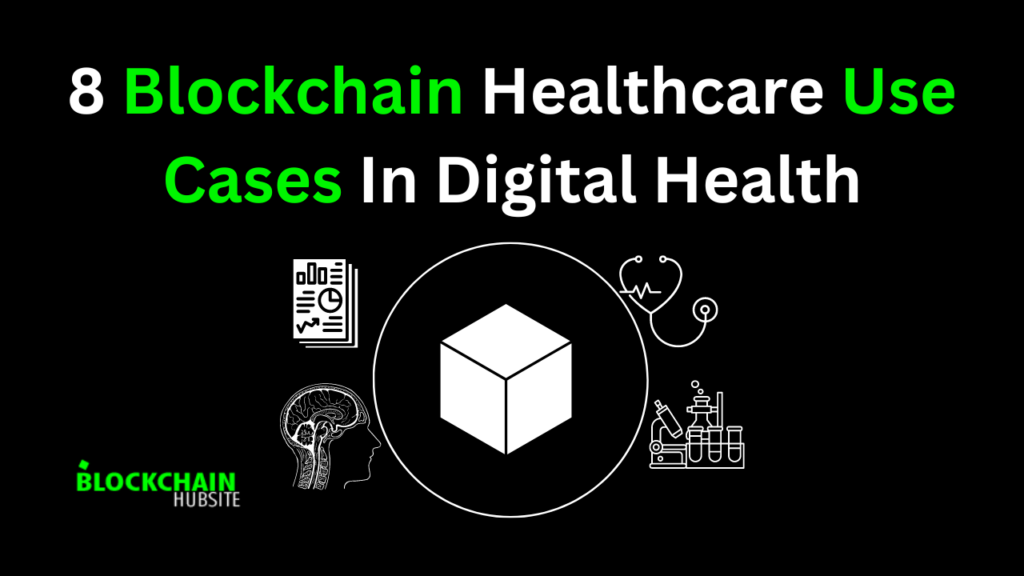
Table of Contents
Introduction
Blockchain wallets allow users to store, send and receive cryptocurrencies like Bitcoin and Ethereum. Unlike traditional bank accounts, blockchain wallets do not rely on any central authority and can be accessed by the wallet owner with an internet connection from anywhere in the world. Blockchain wallets are critical for interacting with cryptocurrencies and the overall crypto ecosystem.
However, moving funds between blockchain wallets and mainstream banking systems is not always straightforward. Connecting a blockchain wallet to a bank account enables a more effortless transfer of funds, bridging the decentralized world of cryptocurrencies and the traditional financial system. This connection also facilitates converting cryptocurrencies into national fiat currencies like USD, which are more commonly used for everyday transactions.
The merging of digital assets with conventional banking: what comes next? Learn the steps as we answer the question, “How can I connect my blockchain wallet to my bank account?”
This article discusses the importance and methods of connecting a blockchain wallet to a personal bank account through services or platforms specializing in these transfers and conversions of funds. The process involves associating wallet addresses with bank account details, verifying identity, and using automated clearing house (ACH) transactions to move fiat currencies to and from the bank account. Connecting a blockchain wallet to a bank account provides greater flexibility, liquidity, and convenience in interacting with cryptocurrencies.
Understanding Blockchain Wallets

Blockchain wallets are digital wallets that allow users to store and manage blockchain-based assets like cryptocurrencies. They utilize blockchain technology to encrypt assets and enable secure storage and transactions. Some key features of blockchain wallets are:
- Private keys that give users ownership and control of their funds
- Wallet addresses that allow the sending/receiving of cryptocurrencies
- Support storage, tracking, and spending of coins like Bitcoin, Ethereum etc.
Blockchain wallets store digital currency by storing a user’s public and private keys on the blockchain, unlike traditional wallets, which hold actual currency. Private keys are utilized to authenticate transactions and demonstrate ownership of the cryptocurrency kept in a wallet, while public keys are utilized to receive Bitcoin.
Blockchain wallets come in several styles, such as desktop wallets, mobile wallets, web wallets, and hardware wallets. You may install a desktop wallet on your PC and a mobile wallet on your tablet or smartphone. In contrast to hardware wallets, which keep private keys offline, web wallets are accessible via a user’s web browser. While deciding on a wallet, users must consider the pros and cons of every type to find the one that best suits their needs and interests.
While blockchain wallets provide robust security and ownership features, they can be more complex for newer users when converting assets to traditional currencies. This is where integrating them with bank accounts can be very useful.
Some benefits of connecting a blockchain wallet to a bank account are:
- Ability to quickly move funds between cryptocurrencies and bank accounts
- Withdraw/deposit traditional currencies seamlessly
- Avoid fees associated with external conversions or transfers
- Create recurring buys/sells between assets and traditional bank holdings
- Simplifies tracking and accounting for cryptocurrency spending
Choosing a Blockchain Wallet

Some top wallet choices are:
- Coinbase – A famous exchange with an integrated web wallet to easily buy, sell, and store crypto.
- MetaMask – An Ethereum and ERC20 token wallet used to interact with dapps and DeFi. Works via browser extensions.
Factors to consider when selecting a wallet

Selecting a suitable cryptocurrency wallet is essential to manage your digital assets securely. Now, countless wallet options are available on the market, both for desktop and mobile devices. Evaluating your needs and the performance of several leading contenders can help determine the right fit. Some key factors to consider include:
Supported Assets
The first step is to analyze which blockchain network(s) and associated coins or tokens you aim to store or transact. Most wallets will support prominent names like Bitcoin and Ethereum-based assets. However, research should confirm compatibility with lesser-known altcoins if those are in your portfolio mix. Cross-chain wallets are emerging to organize various cryptocurrencies.
Security & Reputation
A wallet’s security track record should be scrutinized as an electronic gateway to accessing your funds. Check ratings on app stores, forums and expert reviews for any known weaknesses, flaws or failures regarding the protection of keys and access credentials. Long-operating reputable brands incorporating encryption, transaction validation and optimal backup solutions tend to fare better in securing assets.
Accessibility & User Experience
The functionality and navigation experience of transacting or connecting the wallet across devices should also suit your habits. Analyze whether the interface and wallet management are smooth on your desktop, website and mobile platforms. Support resources regarding setup and maintenance are also vital for a positive user experience.
Cost Considerations
While many wallets have free onboarding and usage, some apply charges or premium add-ons for advanced transactions, quicker settlement, increased insurance or more excellent coin support. Understanding all cost factors can prevent surprises down the road. Hardware wallets also represent a more significant upfront cost for severe traders.
Choosing a blockchain wallet service

There are many options for blockchain wallet services that allow you to buy, sell and hold cryptocurrencies. Some of the most popular consumer-facing services are:
Coinbase – One of the largest exchanges, insured hot wallets, support for many significant coins, integrated banking and payments
Kraken – Prominent US-based exchange with tight security and a wide range of assets and fiat pairs
Gemini – Regulated exchange by Winklevoss twins, insured hot wallets, focus on low fees and security
Binance – Largest global exchange with hundreds of trading pairs and near-instant transactions
Crypto.com – Platform with debit cards, earning products, and non-custodial DeFi wallet integration
Factors to consider when choosing
When picking out a blockchain wallet provider, some key factors you should consider include:
Fees – Cost structure for trades, deposits/withdrawals, account management etc.
Security features – Extent of cold storage usage, insurance coverage, security standards
Bank integration – Linking accounts, deposit/withdrawal support for your currencies
Supported assets – Coins are offered now and plans to add more later
Ease of use – Accessibility and intuitiveness for newer cryptocurrency users
Compliance – Adherence to regulations in significant jurisdictions
Customer support – Quality and responsiveness of assistance channels
You can determine the best fit based on your priorities and needs by evaluating providers across these parameters. Make sure to research multiple options thoroughly before deciding on a wallet service.
Verifying your identity

A. KYC/AML requirements
KYC stands for “Know Your Customer,” and AML stands for “Anti-Money Laundering.” These are regulations intended to prevent financial crimes and illegal money transfers.
To connect a bank account to your blockchain wallet, you must complete identity verification to comply with KYC/AML rules. Exchanges must corroborate user identities and ensure funds come from legitimate sources.
The extent of verification required differs by service. But at minimum, expect to provide details like:
- Full legal name
- Physical address
- Date of birth
- Social security number
B. Uploading ID documents
Along with entering personal details, KYC procedures require submitting ID documentation as photographic proof of your identity.
The specific documents needed vary by exchange. Most will require either:
- National ID card
- Passport
- Driver’s license
Some may also accept secondary documents like utility bills. Uploads are typically done through the wallet interface. Services will cross-check submitted documents against private databases to confirm identities.
Providing complete and accurate KYC information is crucial for avoiding account suspension down the line. While the verification process takes effort, it unlocks convenient linkage with your finances.
Linking Blockchain Wallet to Bank Account

Connecting your cryptocurrency wallet to a traditional bank account is essential for a few reasons:
- It allows you to cash out crypto holdings as needed into fiat currency.
- It enables setting up recurring buy or sell orders between both systems.
- It provides an on/off ramp to interconvert currencies conveniently.
Wallet compatibility with banks
Leading wallets often easily facilitate bank account connections. For example:
- Coinbase Wallet – Direct bank account linking support.
- Exodus – It integrates with the transaction network Wyre to use bank transfers.
- Ledger Live – Partners with various payment processors to convert balances.
Options like wire transfers, ACH transfers, linking debit card
There are a few common ways to connect your bank account to your blockchain wallet service:
Wire transfers: Wire transfers link your bank account by providing account and routing numbers to transfer funds. Transfers happen faster.
ACH transfers: ACH transfers are similar to wire transfers but take 2-5 days. Suitable for recurring transfers.
Debit card: Some services let you instantly link accounts by adding your debit card.
Entering and verifying bank details
To establish the connection via your preferred method, you need to provide your banking details, including:
- Account holder name
- Bank name
- Account number
- Routing number
Make sure the name matches your wallet ID. Any mismatches will lead to complications.
Trial deposits for confirmation
Exchanges will do small test transfers (usually under $1) between your linked accounts. This verifies proper account linkage and ownership. Just check your bank to find these micro-deposits and enter those amounts to confirm the linkage. Then, you’ll have integrated accounts ready for complete transfers.
Making transfers between wallet and bank
A. Overview of transfer methods and timelines
Once your accounts are connected, you can transfer funds between your bank and blockchain wallet.
Transfers can initiate from either side. Typical options include:
- ACH bank transfer – 2-5 day completion
- Wire transfer – 24-48 hour completion
- Debit card purchase – Instant but has higher fees
Keep the timelines in mind when moving money. Don’t assume funds are available immediately.
B. Tips for avoiding mistakes
To avoid errors when transferring:
- Double-check wallet addresses when transferring crypto
- Verify supported assets for banking transfers
- Check transaction sizes and daily limits
- Make a small test transfer first
C. Warning about transfer reversals
Note that bank transfers can be reversed or invalidated even after the fact. However, blockchain transactions are irreversible.
Be wary of scam attempts that rely on bank transfers subsequently canceled. Wallet services warn users explicitly about this possibility when moving significant sums.
Using connected accounts seamlessly
Most services allow you to save those details conveniently once your bank account is successfully linked to your blockchain wallet.
This allows quick and easy future transfers without re-verifying details each time. You can just access the saved bank connection for quick transfers.
Automatic transfers on schedule
Some wallet providers also allow setting up recurring buys or sells on a set timeline. This allows effortless dollar cost averaging or profit-taking without manual intervention.
For example, you could set up automatic $500 purchases from your bank every two weeks to build Bitcoin holdings smoothly over time.
Tax implications and record keeping
With integrated accounts, all transactions occur on rails and require proper accounting. Cryptocurrency is treated as property by the IRS tax code.
So, you must track capital gains, losses, and income for tax reporting. Transfers also enable the spending of crypto, which is a taxable event.
Use tools to export complete transaction histories from wallets for proper documentation. This streamlines filing taxes on crypto activity via connected bank accounts.
Security Best Practices

Since cryptocurrency transactions are irreversible, assets stored in a blockchain wallet require prudent protection. Follow these best practices:
- Generate a Strong Password Create a long, random password consisting of upper and lower case letters, numbers, and symbols. Do not use personal info or common words.
- Enable Two-Factor Authentication: Add an extra credential check by linking a security app or phone number for 2FA codes during login.
- Backup Recovery Phrase: Carefully write down or save the wallet’s recovery phrase to restore access if it is ever lost. Never store it digitally.
- Update Software Frequently: Be sure to update the wallet app, OS, and device firmware to receive security patches.
- Activate Additional Features Check for other native security tools like address whitelisting, limits, or locks to customize as warranted.
- Beware Phishing Attempts
- Watch for suspicious communications asking to share credentials or download fake software updates. Only access links from trusted sources.
These tips will help guard your cryptocurrency holdings against theft and irretrievable loss due to lax wallet security.
A. Two-Factor Authentication (2FA)
Enabling 2FA requires dual credentials to verify your identity for wallet logins. Your password plus a generated number code from an authenticator app or text prevents unauthorized access. Enforce 2FA on all platform accounts’ wallets, exchanges, or banks.
B. Secure Password Practices
Password guardrails should be:
- Long and complex – 12+ random characters with upper/lower case, symbols, numbers
- Changed frequently every three months
- Unique for every account, never reused
- Record in a password manager, not notepads, files etc
- Consider using passphrases for easier recall
Turn off device or browser password auto-fillers, which impair control and reveal stored passwords.
C. Regular Updates
Updating the wallet application, device operating system, and banking application with the latest releases is critical. Developers often fix security bugs or vulnerabilities after discovery. Newer wallet or OS versions have superior credential protection, monitoring, and encryption. Failing to patch leaves more significant risks of exploits like malware, hacking, or scams.
Bank account details like linked cards, numbers, addresses and verification info should also stay updated within wallet settings or apps. This keeps money flows valid and enables account lockouts as necessary.
Troubleshooting Problems
- You may have issues verifying and linking a bank account due to name mismatch, bank validation failures, or other identity confirmation problems. Work with wallet support to troubleshoot.
- Sometimes, transactions fail or get stuck when transferring between the wallet and bank account. Check transaction histories and statuses before attempting to send again.
- If you encounter technical problems, most major wallet providers have customer support teams to assist users. Check the support section of your wallet’s website and submit a ticket if needed. Be wary of scammers pretending to offer fraudulent support.
Conclusion
Connecting your blockchain wallet to your personal bank account can provide much easier transfers of funds on and off the blockchain network. However, it also introduces security risks if not done correctly. Be sure to enable all available security features on your wallet, like whitelisting, two-factor authentication, and transaction validation, to keep your funds safe from unauthorized access or withdrawal.
Stay up-to-date on evolving regulatory requirements so your provider can make necessary adjustments. Pay close attention to your wallet and bank account activity to catch any red flags early on. If you encounter technical troubles linking or transacting between accounts, check status histories and contact your wallet’s customer support channel for assistance. These precautions will allow you to securely link your bank account to access your blockchain capital conveniently.




